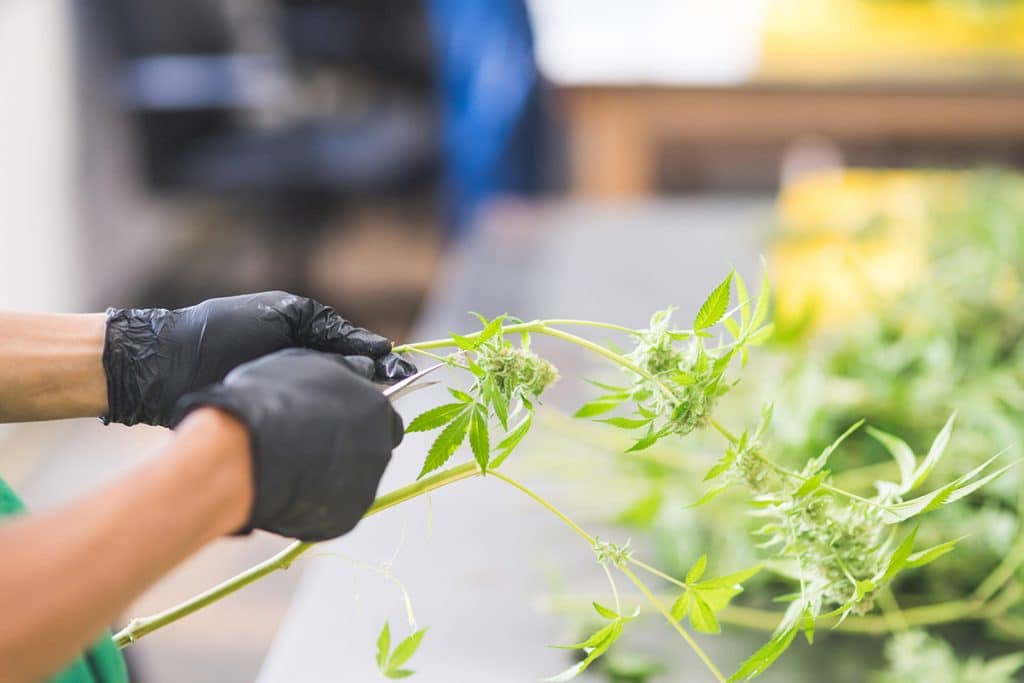As the legalization of cannabis and cannabis-related products continues to make progress, keeping legalities straight can be challenging. The rise of the cannabidiol (CBD) industry has also led to an abundance of misinformation online and in the media, making it harder for the average consumer to find the right answers to their questions. But cannabis, hemp, hemp derivatives, CBD, and marijuana continue to gain popularity, and it is important to fully understand what is legal and what is not. Below, we have put together a comparison between the legalities of marijuana and the legalities of hemp as a thorough examination and differentiation.
Brief History of Cannabis Regulations in the United States
Since the origins of cannabis, people have used this plant for a wide range of religious, industrial, therapeutic, or recreational purposes. In the mid-1800s and through the early 1900s, cannabis was found useful for a variety of medical conditions. As smoking cannabis became increasingly popular, the term marijuana began to surface.
Gradually, growing concerns surrounded the plant, due to lack of accessible knowledge, increased interest and usage, and experimentation with other drugs. Pop culture aided an anti-marijuana movement as well, such as the 1936 film Reefer Madness, which depicted a downward spiraling chain of events that awaited marijuana users and had a reverberating social impact. The Federal Marijuana Tax Act of 1937 imposed taxes on medical and non-medical cannabis, which made obtaining and using marijuana much more difficult.
In 1961, the United States signed the Single Convention on Narcotic Drugs, an international treaty formed to significantly limit the production and supply of specific “narcotic” drugs. In this accord, cannabis and cannabis resin were placed in the most restrictive category. Additionally, the United States Congress enacted the Controlled Substances Act of 1970 (CSA), in which hemp was grouped together with marijuana and listed together as a Schedule I controlled substance. The 2018 Farm Bill later amended this wording, officially excluding hemp and hemp-derived tetrahydrocannabinol (THC) from the definition of marijuana and THC.
Marijuana: Federal Schedule I Substance
To schedule a substance in Schedule I, the Drug Enforcement Administration (DEA) must find that the substance has no known medicinal value, which is a point of contention for many marijuana advocates. Additionally, the CSA maintains that illegal use, importation, manufacturing, and distribution of marijuana can have a detrimental effect on the public’s health and welfare. As Schedule I substances, marijuana and THC are classified as hallucinogens, along with other drugs such as mescaline, psilocybin, MDMA, and LSD.
Under its legal definition in the CSA, marijuana was defined as
“all parts of the plant cannabis sativa L, whether growing or not; the seeds thereof; the resin extracted from ant part of such plant; and every compound, manufacture, salt, derivative, mixture, or preparation of such plant, its seeds or resin.”
At this point, this meant that the 100+ cannabinoids in cannabis plants were also classified as Schedule I substances. This remained the formal definition of marijuana until the amendments made by the 2018 Farm Bill, which differentiated hemp and hemp derivatives.
Hemp and Hemp Derivatives: Federal Legal Status
Hemp, under section 1639o of the 2018 Farm Bill, is legally defined as
the plant Cannabis sativa L. and any part of that plant, including the seeds thereof and all derivatives, extracts, cannabinoids, isomers, acids, salts, and salts of isomers, whether growing or not, with a delta-9 tetrahydrocannabinol concentration of not more than 0.3 percent on a dry weight basis.
7 U.S.C. § 1639o. This language means that hemp and hemp derivatives are no longer controlled substances, and it was included to clarify the legal status of cannabinoids derived from hemp, such as cannabidiol (“CBD”). Additionally, the 2018 Farm Bill requires that hemp cultivation be licensed and regulated in accordance with state plans, the provisions for which are outlined in the United States Department of Agriculture’s (USDA’s) Interim Final Rule. The USDA’s Interim Final Rule, or the Domestic Hemp Production Program, put forth regulations and requirements for all aspects of state hemp production. The USDA has the authority to issue hemp regulations and guidance, but the United States Food and Drug Administration (FDA) maintains jurisdiction over hemp products subject to the Federal Food, Drug, and Cosmetics (FD&C) Act.
Marijuana and Hemp: State and Federal Conflict
Though given formal and legal distinctions, marijuana and hemp continue to face confusion due to state and federal regulatory conflicts. Currently, 34 states and Washington D.C. have enacted laws that allow the medical use of cannabis and cannabis derivatives. The respective laws and restrictions vary from state to state, as many of them include stipulations limited to specific, qualifying medical conditions. Furthermore, 11 of these states permit commercial cannabis businesses and adult marijuana use, and thereby allow state-licensed organizations to produce, distribute, and sell cannabis and cannabis products. However, quality control and testing, label requirements, and regulations vary from state to state, and are sometimes even nonexistent.
These types of confusing parameters are difficult to keep track of and often perpetuate sluggish progress. As a legal cannabis, hemp, or CBD business, it’s integral to stay up-to-date on the ever-changing legalities in the industry. Hemp lawyers are a great resource and should be consulted to avoid any potential conflicts or accidental criminal activity, as ignorance of the law is no excuse.
As a hemp lawyer, Chelsie Spencer works with an array of clients in the hemp and legal marijuana space. She remains active in legislative actions impacting hemp and marijuana businesses, providing informative counsel and driving progress as the industry continues to rapidly expand. Contact Ritter Spencer Cheng or give us a call at 214.295.5070 for more information.







